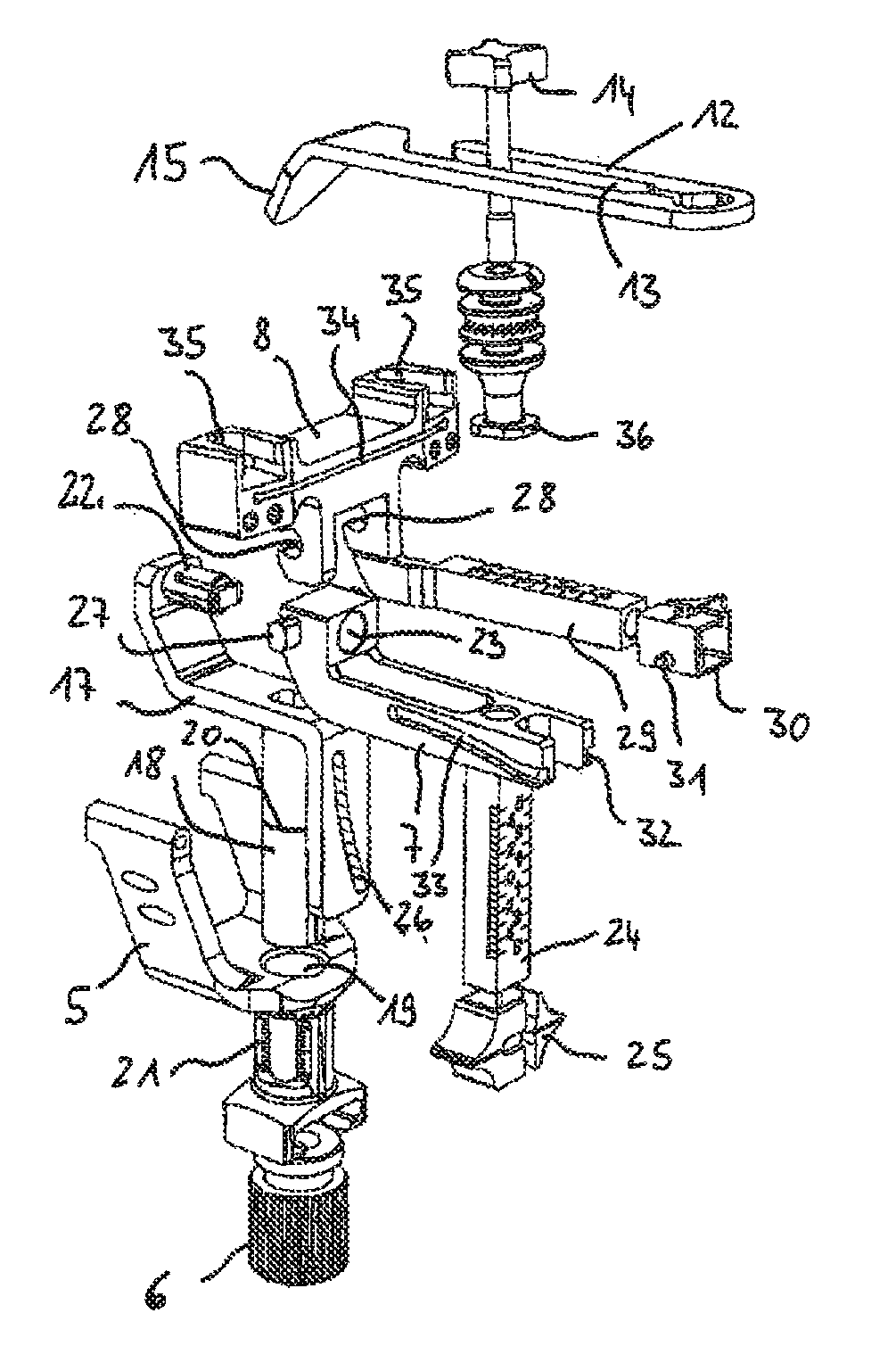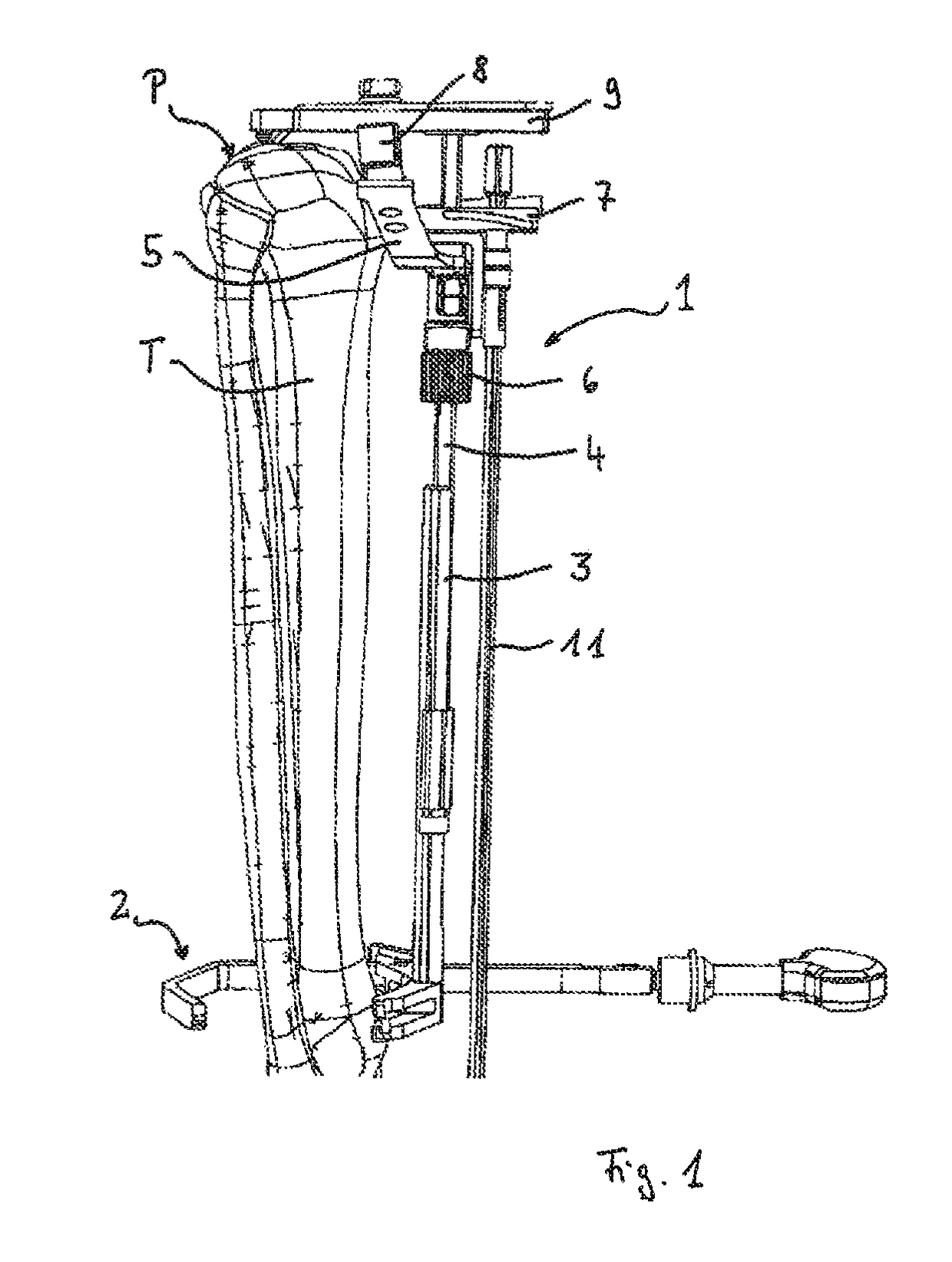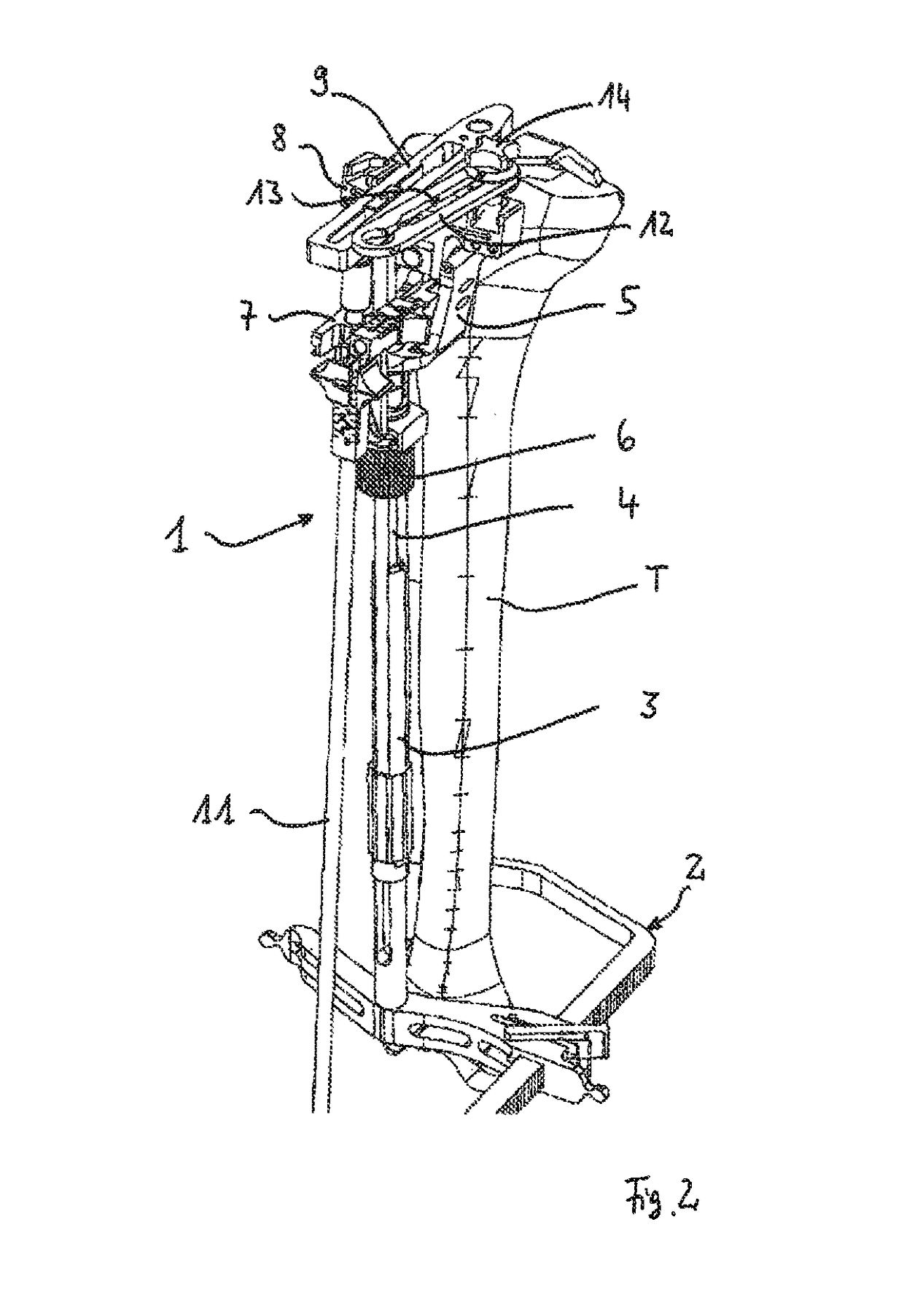Device for defining a cutting plane for a bone resection
a cutting plane and bone resection technology, applied in the field of bone resection cutting plane devices, can solve the problems of difficult to keep such foot clamps stable, difficult to tightly secure the foot clamps, and device disclosed
- Summary
- Abstract
- Description
- Claims
- Application Information
AI Technical Summary
Benefits of technology
Problems solved by technology
Method used
Image
Examples
Embodiment Construction
[0007]A remedy is to be created here with this invention by refining a device of the type described in the introduction in that the device includes a base body that can be positioned on the bone as well as a cut-guiding body which can be attached to the base body in a variable position and has a cut-guiding structure for guiding a cutting tool in the cutting plane, where the cut-guiding body can be tilted relative to the base body by means of a first adjustable tilt mechanism about at least one axis for an angle adjustment of the cutting plane; and wherein the extent that the tilt mechanism is simple to operate and is reliable with regard to the accuracy of the position of the cutting plane, once its position has been set, even while performing the resection cut.
[0008]A solution to this problem is offered with the present invention through a device having the features a base body that can be positioned on the bone as well as a cut-guiding body which can be attached to the base body ...
PUM
 Login to View More
Login to View More Abstract
Description
Claims
Application Information
 Login to View More
Login to View More - R&D
- Intellectual Property
- Life Sciences
- Materials
- Tech Scout
- Unparalleled Data Quality
- Higher Quality Content
- 60% Fewer Hallucinations
Browse by: Latest US Patents, China's latest patents, Technical Efficacy Thesaurus, Application Domain, Technology Topic, Popular Technical Reports.
© 2025 PatSnap. All rights reserved.Legal|Privacy policy|Modern Slavery Act Transparency Statement|Sitemap|About US| Contact US: help@patsnap.com



